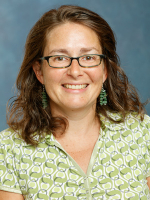July 25-26, 2019
Dr. Kevin Folta
“Manipulating Biology with Artificial Light Environments and Random DNA Sequences"
and
"Rethinking Science Communication – New Rules for Scientists"
For more information: https://hos.ifas.ufl.edu/people/on-campus-faculty/kevin-m-folta/
July 4, 2019
Dr. James Bullard
“Aminoacyl tRNA synthetases from Pseudomonas aeruginosa as platforms for discovery of antibacterial agents and development of a natural protein synthesis system"
For more information: https://webapps.utrgv.edu/aa/dm/index.cfm?action=profile&user=james.bullard
June 28, 2019
Dr. Jacob Thundathil
“The sodium pump and regulation of sperm function"
For more information: https://vet.ucalgary.ca/contact-us/faculty-members/full-time/jacob-thundathil
June 18, 2019
Dr. Oliver Ernst
“Structure and Dynamics of GPCRs at work: Insights from the visual system"
G-protein-coupled receptors (GPCRs) are the largest family of cell surface receptors in the human body and regulate nearly all of our physiology. The inner working of these receptors and understanding signal transfer to the G protein is therefore of immense interest. The combination of structural and biophysical approaches yields mechanistic insight into the signaling process. The last decade has seen more than 50 GPCR crystal structures and information on GPCR dynamics emerge from NMR, EPR and fluorescence studies. However, a bottleneck is still structure analysis of GPCRs in different functional states as well as of GPCRs upon interaction with signaling proteins. We use rhodopsin, the photoreceptor protein in vision, as a model system to understand the molecular mechanism of GPCR signaling. Site-directed spin labeling of rhodopsin and Double Electron-Electron Resonance (DEER) / EPR spectroscopy can help to fill in gaps in understanding rhodopsin conformational states. DEER spectroscopy and cryo-EM provide insight into the interaction between rhodopsin and its binding partners.
About Dr. Ernst:
Oliver P. Ernst received his doctoral degree (Dr. rer. nat., Chemistry/Biochemistry) from the University of Freiburg, Germany, in 1994. After research training at Rockefeller University, he joined the Charité–Universitätsmedizin Berlin, where he became a group leader and made his Habilitation in Biophysics in 2003. Since 2011, he has been a full professor in the Departments of Biochemistry and Molecular Genetics at the University of Toronto. He is the Max and Anne Tanenbaum Chair in Neuroscience and Canada Excellence Research Chair Laureate in Structural Neurobiology. He is a co-director of the “Molecular Architecture of Life” research program of the Canadian Institute for Advanced Research (CIFAR). His research focuses on rhodopsin and visual signal transduction as well as other GPCRs.
For more information: http://biochemistry.utoronto.ca/person/oliver-p-ernst/
May 27, 2019
Dr. Nehal Thakor
“Regulation of mRNA translation: from mechanism to cancer cell survival"
For more information: http://www.uleth.ca/research/centres-institutes/alberta-rna-research-and-training-institute/thakor-group
April 18, 2019
Ms. Michelle Nemetchek
“Mechanisms of biased agonism in the nuclear receptor PPARγ"
For more information: https://apps.umt.edu/directory/details/85f1fa1b420f867414f7419bd30394e2
April 18, 2019
Dr. Harmen Steele
“The human cytochrome c domain-swapped dimer: tight regulation of intrinsic apoptosis"
March 15, 2019
Dr. Karen Glass
“Combinatorial Recognition of Histone Modifications"
For more information: https://www.acphs.edu/karen-glass
February 27, 2019
Dr. Borries Demeler
“Probing molecular interactions in the solution phase by multi-wavelength analytical ultracentrifugation”
For more information: https://www.demeler.uleth.ca/
January 28, 2019
Dr. Artur Luczak
“Decoding brain and behavior using artificial intelligence"
For more information: https://www.uleth.ca/artsci/neuroscience/dr-artur-luczak
December 5, 2018
Dr. Gregg Morin
"Chemo-proteogenomic analyses of CDK12’s role in mRNA processing"
For more information: http://www.bcgsc.ca/faculty/gmorin
UNews: https://www.uleth.ca/unews/article/leading-cancer-researcher-dr-gregg-mo...
November 26, 2018
Dr. Nils Walter
"Single Molecules Come Into Focus: Understanding RNA-Driven Regulation From First Principles"
For more information: https://sites.lsa.umich.edu/walter-lab/
UNews: https://www.uleth.ca/unews/article/arrti-speaker-series-welcomes-dr-nils...
November 15, 2018
Dr. Alexey Savelyev
“Multi-Scale Computational Modeling of DNA and Applications to Biophysical Problems”
Computational modeling by means of Molecular Dynamics (MD) simulations is an integral part of many biophysical studies. MD represents a powerful approach to explore energetics and structural transitions at different levels of detail representation in complex biological molecules such as DNA, proteins, membranes and their complexes. It is an invaluable tool complementing or sometimes substituting such traditional experimental biophysical techniques as X-ray crystallography and solution NMR which are plagued by a number of problems associated with the object’s crystallization and resolution issues, as well as accessibility to short lived high energy states and time domain information. I will briefly cover basics of MD and ideas of the force-field development for biomolecules modeled at different resolutions. As an example, I will discuss two DNA models developed during my past research which are very distant from each other on the detail scale: (1) the CHARMM polarizable model based on the Drude oscillator formalism where each heavy atom is supplemented by auxiliary Drude particle(s) to mimic induced polarization, and (2) the 2-beads-per-base-pair coarse-grained (CG) model where an entire nucleotide is reduced to a single particle. On a practical side, I will discuss predictions of these two MD simulated models for a range of biophysical problems including counterion condensation theory, competitive ionic binding to DNA, conformational DNA properties in solutions of different ionic buffers as seen from numerically computed SAXS profiles and Principal Component Analysis performed on MD trajectory, structural transitions in torsionally stressed DNA nanocircles, dependence of the DNA persistence length on ionic strength of solution, and more. Finally, I will mention implications of these MD simulations results to such vitally important questions as protein-DNA recognition and chromatin folding.
November 15, 2018
Dr. Emre Brookes
“Advancements in analysis of small angle scattering experiments, hydrodynamic computations and putting your software on the web"
Biological small angle X-ray scattering (SAXS) is a powerful technique providing insight into the solution structure of biological macromolecules. One important caveat – to maximize information content of experimental results, the solute under study must be monodisperse.
This is generally practically difficult to truly achieve in a standard SAXS setup, therefore beamlines have begun coupling size exclusion chromatography (SEC) inline with SAXS measurement. The US-SOMO software suite has developed powerful tools for the deconvolution of SEC-SAXS data into their monodisperse equivalents, a novel method for correct of capillary fouling in such data, and created novel methods for viewing the similarity of SEC-SAXS profiles.
US-SOMO has, for years, enabled hydrodynamic computations from atomic structures and bead models for validation of putative structures against experimental data. A novel combination of modeling and computation has resulted in US-SOMO producing the best computed hydrodynamic value accuracy in comparison with experimental data.
An NSF funded international grant included aims to deploy several diverse SAS applications to the web and to run jobs on high performance computing and cluster resources. Rather than hand coding, and after finding no satisfactory existing tool, we developed a tool to automate this work in a most general way. The result was GenApp, a generalized application generation framework intended for rapid deployment of scientific codes, simultaneously generating web-portals and standalone GUI applications. Among the many unique features of GenApp are the minimal technical expertise requirements for the researcher with code to deploy and an open and easily extensible design ensuring sustainability of generated applications. Several science gateways are in production with hundreds of users, thousands of jobs, and over 50 known publications generated by their users.
August 21, 2018
Dr. Gareth Williams
"Biochemical and structural basis for how the human RAD51 paralogs promote homologous recombination repair"
DNA double-strand breaks are among the most toxic forms of DNA damage, and their misrepair can lead to chromosome rearrangements that are a hallmark of cancer. Homologous recombination repair is an essential pathway that fixes DNA double-strand breaks and stalled replication forks. Central to HRR is the RAD51 recombinase, which forms nucleoprotein filaments that carry out strand exchange and the search for homology. The human RAD51 paralog ATPase complexes (RAD51C-XRCC3 and RAD51B-RAD51C-RAD51D-XRCC2) interact with RAD51 and play important roles to promote homologous recombination repair, yet their precise functions in this pathway remain enigmatic. We have developed robust methods to purify the human RAD51C-XRCC3 complex and find that this complex binds to and structurally remodels presynaptic RAD51 filaments to stimulate HRR. We have also combined small-angle X-ray scattering, X-ray crystallography, and modelling approaches to build a high-resolution structure of the RAD51C-XRCC3 complex to understand the molecular basis for their interaction and the impact of cancer-associated mutations.
Dr. Williams is a new investigator who started his laboratory investigating the structural biology of DNA repair at the University of Calgary in 2016. He is a member of the Robson DNA Science Centre in the Arnie Charbonneau Cancer Institute, and the Biochemistry & Molecular Biology department. Prior to moving to Calgary, Dr. Williams did his postdoctoral research in Dr. John Tainer’s lab at Lawrence Berkeley National Laboratory (California, U.S.A.), where he combined the structural techniques of small-angle X-ray scattering and X-ray crystallography to understand how proteins detect and repair DNA damage. Dr. Williams is originally from the U.K., where he did his Ph.D. in X-ray crystallography at the University of St. Andrews under the supervision of Dr. James Naismith, and his undergraduate degree at the University of Nottingham.
For more information: https://www.ucalgary.ca/bmb/profiles/dr-gareth-williams
UNews: http://www.ulethbridge.ca/unews/article/arrti-speaker-series-features-un...
June 28, 2018
Dr. Jane Jackman
"Non-canonical enzymes catalyze critical steps in tRNA processing and modification"
Jane E. Jackman received her B.S. in Biochemistry from the University of Rochester, Rochester, NY, where she studied electron transfer reactions catalyzed by the cytochrome c:cytochrome c peroxidase system in the lab of George McLendon. She received her Ph.D. degree in Biochemistry from Duke University in Durham, NC, working with Carol Fierke and Chris Raetz to investigate the catalytic mechanism of a metal-dependent metalloamidase (LpxC), a target for novel anti-microbial compounds that catalyzes the committed step during biosynthesis of the lipid A component of lipopolysaccharide. As a post-doctoral fellow in the laboratory of Eric Phizicky at the University of Rochester School of Medicine, she participated in identification of several previously undiscovered tRNA modification enzymes, including several that exhibit novel enzyme chemistry. Jane joined the faculty of Ohio State in 2007 as an assistant professor in the Department of Biochemistry. She is a member of the Ohio State Biochemistry Program (OSBP), Molecular, Cell and Developmental Biology graduate program (MCDB) and the Ohio State University RNA Center.
For more information: https://chemistry.osu.edu/people/jackman.14
March 8, 2018
Dr. Carla Coffin
University of Calgary
"Hepatitis B Virus Persistence"
The hepatitis B virus (HBV) is a global human pathogen that causes chronic hepatitis B (CHB) in ~240 million people worldwide who have a 15-40% lifetime risk of end-stage liver disease and/or hepatocellular carcinoma (HCC). Key events in the HBV lifecycle include the formation of an intranuclear minichromosome, known as covalently closed circular DNA (cccDNA) that serves as a reservoir for the HBV. Second, the HBV utilizes reverse transcription of an RNA intermediate to copy its genome leading to viral variants or quasispecies. Additionally, although HBV is considered a hepatotropic virus, it can also infect and propagate within cells of the immune system (i.e., lymphoid cells), which is an important immune evasion strategy. There are 10 HBV genotypes reported (A-J) with specific geographical distribution. There is evidence that the HBV genotype, viral diversity and mutants correlate with the natural history of chronic hepatitis B. Our studies integrate well-defined, known clinical factors in patients infected with the hepatitis B virus with virological biomarkers such as HBV DNA, RNA, quantitative hepatitis B surface antigen levels, genotypes/viral variants, and HBV cccDNA reservoirs. Our clinical and laboratory studies delineate how these factors reflect HBV natural history, to understand HBV persistence and guide clinical management of HBV infected patients.
Dr. Carla Coffin is an Associate Professor in the Cumming School of Medicine at the University of Calgary and the Medical Director of the Calgary Liver Unit. Her clinical and bench laboratory research aims to help better identify hepatitis B patients that would benefit from therapy, as well as developing better HBV therapeutics. She will provide an outline of her research activities at the University of Lethbridge on March 8th. Dr. Coffin received her MSc and MD from Memorial University of Newfoundland. She completed training in Internal Medicine and Gastroenterology at the University of Calgary and an American Association for the Study of Liver Diseases Advanced Hepatology Fellowship at the University of California San Francisco. She was co-chair of the 2018 Canadian Association for the Study of the Liver Management of HBV guidelines committee and served on the World Health Organization (WHO) Expert Advisory Committee for Essential Medicines (HBV and HCV).
For more information: https://www.ucalgary.ca/girg/membership/coffinc
UNews: https://www.uleth.ca/communications/university-lethbridge-and-university...
December 13, 2017

Dr. Richard Fahlman
"Non-Canonical Roles for the Translational Machinery in Proteostasis - Insights into Alternative Functions for tRNAs and Ribosomes in Gene Expression"
A central concept in biology regarding gene expression is that the information encoded in our genes is translated into proteins that carry out the functions in a cell. In this process, the molecular machines responsible for the translation also play roles in regulating which genes are translated into proteins in a given cell. This regulation explains why cells within different tissues and organs are very dissimilar, despite them all having identical genomes. In diseases such as cancer, there is often a dysregulation of which genes are being translated, which can lead to the aggressive growth behavior of tumors. My research into new mechanisms of gene expression is revealing the details on how tumors are so different than their original tissue, and is discerning new ways we may be able to combat these diseases.
For more information: http://www2.biochem.ualberta.ca/FahlmanLab/
December 6, 2017
Dr. Andrea Gorrell
"Haloarcula marismortui Gene Expression Profiling Under Potassium Stress Conditions"
The research in the lab focuses on structure/function studies of enzymatic reactions, with an emphasis on reactions which occur in the archaea.
For more information: http://web.unbc.ca/~gorrell/
September 1, 2017
Dr. Min-Xin Guan
"Mitochondrial tRNA mutations associated with hearing loss"
For more information: http://person.zju.edu.cn/en/guanmx
August 4, 2017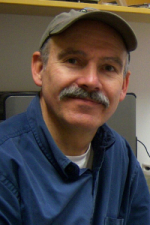
Dr. Borries Demeler
"Measuring Interactions in the Solution Phase: Adding a Spectral Dimension to Analytical Ultracentrifugation"
Ever since Svedberg's Nobel prize, Analytical Ultracentrifugation (AUC) has been regarded as the gold standard for first-principle solution-based interaction analysis. With the arrival of the latest detector technology, an entirely new class of experiments has become possible. Multi-wavelength detection adds an orthogonal spectral dimension to the hydrodynamic characterization of solutes, allowing components with distinct absorbance spectra to be identified based on their optical properties. In this talk, I will describe novel insights gained from this new technology and discuss examples involving spectral separation of protein-nucleic acid interactions, determination of stoichiometry of West Nile virus RNA interactions with host cell proteins, and the elucidation of quantum gap spectra and reaction mechanisms of CdTe quantum dots.
For more information: http://www.demeler.uthscsa.edu/
June 19, 2017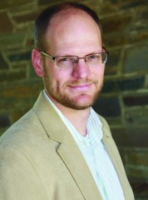
Dr. Ian Lewis
"Predicting disease from metabolites: the challenges and opportunities in state-of-the-art metabolomics"
For more information: https://lewisresearchgroup.org/
June 5, 2017
Dr. Ramon Grima
"Mean field theory of diffusion in heterogeneous intracellular crowded conditions"
It is now well established that cell interiors are significantly crowded by macromolecules, which impede diffusion and enhance binding rates. However, it is not fully appreciated that levels of crowding are heterogeneous, and can vary substantially between subcellular regions. Starting from a stochastic microscopic model, we derive coupled nonlinear PDEs for the concentrations of two populations of large and small spherical particles with steric volume exclusion. By performing a perturbative expansion in the ratio of the particle sizes, we find that the diffusion of a small particle in the presence of large particles obeys an advection-diffusion equation, with a reduced diffusion coefficient and a velocity directed towards less crowded regions. The interplay between advection and diffusion leads to behaviour that differs significantly from Brownian diffusion. We show that biologically plausible distributions of macromolecules can lead to (i) highly non-Gaussian probability densities for the small particle position, including asymmetrical and multimodal densities, (ii) both sub- and super-diffusion for short times. We confirm all our results using hard-sphere Brownian dynamics simulations.
For more information: http://grimagroup.bio.ed.ac.uk/
May 9, 2017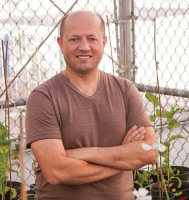
Dr. Igor Kovalchuk
"Role of non-coding RNAs and non-coding RNA fragments in the regulation of genome stability and gene expression"
For more information: http://people.uleth.ca/~igor.kovalchuk/
April 21, 2017
Dr. Sean McKenna
"Investigations into a long non-coding RNA critical for cancer cell survival and proliferation"
BC200 is a 200 nt primate-specific long non-coding RNA expressed at high levels in brain. In addition to brain, BC200 is expressed at moderate levels in testes and is over-expressed in wide variety of tumours and tumour-derived cell lines. BC200 is postulated to play a role in translational regulation of a subset of mRNAs, possibly acting as a key regulator of site specific protein translation. Data concerning the role of BC200 in neural tissue as well as tumour cells is preliminary and to date no mRNAs directly regulated by BC200 have been elucidated. This talk will present our initial work to characterize the structure and function of BC200. Knock-down of BC200 expression results in a dramatic loss of viability through growth arrest and induction of apoptosis; whereas BC200 overexpression had no discernible impact on cell growth or viability. A substantial decrease in BC200 expression was observed upon cell confluence, as well as drug induced cell cycle arrest in G1 or G2 but not S- or M-phases. Protein binding partners of BC200 have been identified through mass spectrometry approaches, as have potential cancer-specific RNA targets via qPCR arrays. Together the work presents compelling evidence that BC200 plays a central role in cancer cell survival and proliferation.
For more information: https://home.cc.umanitoba.ca/~mckenna/
March 28, 2017
Dr. Kristian Baker
"RNA Quality Control - Looking for Nonsense"
Work in the Baker lab is focused on understanding the molecular mechanisms underlying the recognition and rapid degradation of nonsense codon-containing mRNA in eukaryotes by the conserved, nonsense-mediate mRNA decay (NMD) pathway. We couple classical genetics and biochemistry with transcriptome-wide and proteomic approaches to elucidate how the cell detects these aberrant mRNAs and how the NMD machinery functions to rapidly clear them from the cell. Exciting new findings suggest that the NMD machinery directly interacts with prematurely terminating ribosomes and that this interaction is critical for targeting the mRNA to accelerated decay.
For more information: https://case.edu/med/bakerlab/home.html
February 15, 2017
Dr. Michael Stingl
"Ethical Arguments: Are They Aimed at Truth?"
The talk will start with two moral dilemmas to get us arguing about ethics. Given how we in fact argue about ethics, it seems like we are in the pursuit of something we might want to call moral truth: the truth about what we ought to do, or at least, ought not to do. Is moral truth purely a matter of the internal coherence of our overall system of moral beliefs, from beliefs about particular cases all the way up to the most abstract and general of moral principles? Or might moral belief systems be anchored in certain kinds of things that are naturally and biologically good, like empathetic caring, fairness and trust? Might moral beliefs, in other words, be on the track of moral goods that are what they are, independently of how we might want to think and argue about them?
For more information: http://directory.uleth.ca/users/stingl
January 30, 2017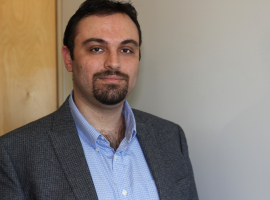
Dr. Athan Zovoilis
"Decoding the non-coding: The case of B2 SINE repeats"
Only 1-2% of our genome has protein-coding potential. The rest of the genome consists largely of repetitive DNA, with satellite DNA, retrotransposable elements, and DNA transposons accounting for ~50% of noncoding sequences. For much of the past few decades, these poorly conserved elements have been considered “junk DNA” — remnants of evolution and genetic parasites that proliferate without constraint of purifying selection. According to the ENCODE project however, >80% of noncoding DNA (including repetitive DNA) is developmentally transcribed into non-coding RNAs. It remains unknown whether these non-coding RNAs have a role in cell function and human disease. However, existing RNA sequencing and data analysis pipelines often ignore most of these RNAs or regard them as transcriptional noise and they filter out these RNAs from further analysis. This talk will present the case of a class of these RNAs, those derived by the mouse B2 SINE repeats, and the attempt to change the above approach to "transcriptional noise". I will elaborate on bioinformatics approaches I used to detect and study the function of these non-coding RNAs that until recently we have either ignored or have been unable to detect.
For more information: https://www.genome-intelligence.org/
November 28, 2016
Dr. Trushar Patel
"Moving to the other side: from Postdoc to PI, from project to program"
For more information: http://trpatel.com/
November 21, 2016
Dr. Joseph Ross
"Host-imposed regulation of bacterial transposition"
June 28, 2016
Dr. Eugene Mueller
"Transforming U: The Modification of Uridine in RNA to Pseudouridine and 4-Thiouridine"
Dr. Mueller's research group works on the ways proteins called enzymes alter the standard components of ribonucleic acid (RNA), the large molecule essential to the life of every cell because it allows the conversion of gene information into the proteins that do a cell’s work. Mueller is looking at the conversion of an RNA component into two products: pseudouridine, the lack of which can lead to human disease; and 4-thiouridine, which bacteria use to sense exposure to near-ultraviolet light. The study of this system sheds light on how sulfur is put into a cell’s many other molecules, including vitamins and other essential molecules.
For more information: https://louisville.edu/chemistry/faculty/eugene-g.-mueller
June 13, 2016
Dr. Joerg Stetefeld
"A Hybrid Method Approach to Unravel Higher-Order Signaling Complexes"
Multicomponent Ligand-Receptor complexes are higher-order signaling assemblies for transmission of receptor activation information to cellular responses. A molecular understanding of these highly complex signaling pathways will shed light into essential key processes such as proximity driven cascade activation, signal-to-noise behavior, signal amplification as well as temporal and spatial control of signal transduction. The Stetefeld Laboratory performs a Hybrid-Method approach – combining biophysical techniques in combination with integrated structural biology techniques – to unravel complex formation. In this presentation, key examples, including netrin-1 driven dependence receptor activation will be discussed.
For more information: https://home.cc.umanitoba.ca/~stetefel/
May 16, 2016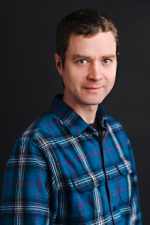
Dr. Brian Ingalls
"Displacement of Bacterial Plasmids by Engineered Unilateral Incompatibility"
Bacterial plasmids employ copy number control systems to ensure they do not overburden their hosts. Plasmid incompatibility is caused by shared components of copy number control systems, resulting in mutual inhibition of replication. Unilateral incompatibility, in which the plasmid replicons are compatible but one plasmid codes for the replication inhibitor of the other, leads to rapid displacement of the inhibited plasmid. We are investigating the use of engineered unilateral incompatibility to eradicate an undesirable “target” plasmid from a population, with a long term goal of displacing plasmid-borne antibiotic resistance genes from pathogen populations. This talk will describe our proof-of-principle experiments demonstrating plasmid delivery and displacement, and our characterizations of the corresponding plasmid dynamics through predictive mathematical modelling.
For more information: https://math.uwaterloo.ca/~bingalls/
May 6, 2016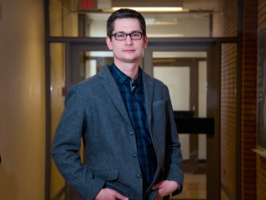
Dr. Darren Derksen
"Natural Products as Inspiration for Novel Therapeutics – Opportunities and Challenges"
Natural products are secondary metabolites produced by microbes, plants, and fungi. These compounds from nature form the basis of many drugs already used in the clinic, particularly against cancer. This presentation will describe ongoing efforts in the Derksen group to identify novel compounds that are active in cancer and inflammation assays, develop practical scale syntheses of novel structures and related analogs, and to establish practical methods of drug delivery. Using expertise in synthesis and natural product chemistry, the Derksen group is involved developing lead compounds for a number of unmet medical needs including chronic pain, irritable bowel syndrome, and novel treatments for multiple myeloma.
For more information: http://people.ucalgary.ca/~dderksen/dr-darren-derksen.html
April 5, 2016
Dr. Douglas Mahoney
"Smac-mimetic and oncolytic virus co-therapy for treating cancer"
Second mitochondrial activator of caspase (Smac)-mimetic compounds (SMC) synergize with oncolytic rhabdoviruses (ORV) in treating tumours grown in mice through an unknown mechanism. We have found that SMC and ORV therapies cooperate in treating cancer by enhancing CD8+ T cell responses toward immunogenic tumours through distinct yet overlapping activities. Data supporting this conclusion will be presented and insight into the molecular mechanisms of action shown. Our results provide further support for the clinical evaluation of SMC and ORV combination therapy for human cancer.
For more information: http://www.ucalgary.ca/microinfect/mahoneydj
June 30, 2015
Dr. George Owttrim
"Conditional proteolysis as a regulator of gene expression: Does cold stress regulate heat stress?"
The ability of free-living microorganisms to sense and respond to abiotic changes in their environment is crucial for survival. Expression of the sole DEAD box RNA helicase, crhR, in the photosynthetic bacterium Synechocystis PCC 6803 is regulated at a minimum of three autoregulatory, CrhR-dependent and three CrhR-independent checkpoints in response to temperature stress. This implies that the rearrangement of RNA secondary structure is required for cellular response to this stress. One of the checkpoints involves the autoregulatory, CrhR-dependent conditional proteolysis of CrhR in response to temperature upshift from 20 to 30oC. A whole cell proteome time course (Richard Fahlman) has identified proteins whose abundance is altered in response to the temperature upshift in a CrhR-dependent fashion. Potentially not unexpectedly, affected proteins are associated with translation and photosynthesis. Unexpectedly, our data suggests that the cold shock protein CrhR functions in a Synechocystis heat shock response. Conditional proteolysis is a much faster way to shut down a biosynthetic pathway that traditional transcription-translation regulatory networks. In the future, we hope to utilize the conditional proteolysis system to rapidly and precisely regulate biosynthetic pathway activity for biotechnological applications.
For more information: https://www.ualberta.ca/science/about-us/contact-us/faculty-directory/ge...
May 21, 2015
Dr. Martin Holcik
"RNA Binding Proteins - It Is All About Location"
Regulation of protein expression through RNA metabolism is a key aspect of cellular homeostasis. Upon specific cellular stresses, distinct transcripts are selectively controlled to modify protein output in order to quickly, appropriately and reversibly respond to stress. This is accomplished through a large assortment of specialized RNA binding proteins (RBPs) which control diverse aspects of RNA metabolism ranging from mRNA processing to export, translation and degradation. Frequently, the same RBP can exhibit multiple roles which are dependent on its subcellular localization within the cell, suggesting that the diverse roles of RBPs in mRNA metabolism are controlled, at least in part, by the compartmentalization of these proteins. Heterogeneous nuclear ribonucleoprotein A1 (hnRNP A1) is one such RBP which normally shuttles between the nucleus and the cytoplasm, with the bulk of the protein displaying nuclear localization. During cellular stress, however, the accumulation of hnRNP A1 in the cytoplasm has different consequences for distinct mRNAs, augmenting expression of some while repressing expression of other mRNAs.
To systematically identify factors and pathways involved in hnRNP A1 localization we set out to determine the signaling molecules that regulation localization of hnNPR A1, and the biological consequences of this regulation. We screened a library of siRNA pools targeting the kinome subset of the human genome and identified several candidate kinases that regulate cytoplasmic accumulation of hnRNP A1 in response to hypertonic stress., The results of the stress and the biological consequences of interference with hnRNP A1 localization will be presented and discussed.
May 19, 2015
Dr. Elizabeth Schultz
"Vein pursuits: towards understanding the formation of plant vascular tissue"
Plant vascular tissue performs two functions critical to plant survival: transport and support. The xylem and phloem tissue provides efficient transport routes for water, minerals, photosynthates and signaling compounds. The vascular cells’ thickened walls provide structural support to the whole plant. Thus, understanding how vascular tissue is formed and patterned is critical to understanding plant water use, photosynthetic efficiency and architecture. Like many key developmental processes in plants, vascular cell fate is induced by the plant hormone auxin. Cells that will become veins transport auxin better than their neighbours, forming an auxin canal. Because of its key developmental role, the mechanism by which auxin is directed through certain cells is an area of active research. Using the model plant Arabidopsis thaliana, our research group has discovered a number of novel genes that affect auxin levels in developing vascular tissue. One group, the FORKED gene family, is unique to plants but is found in multiple copies in all vascular plants. A second gene, UNHINGED, encodes a protein whose ortholog in yeast and animals are important for vacuole trafficking. I will describe our current understanding of how these gene products act within cells to affect auxin levels through developing tissue.
For more information: http://directory.uleth.ca/users/schultz
May 5, 2015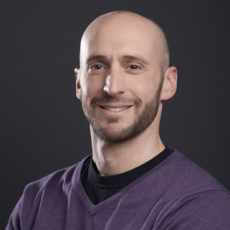
Dr. Steven Smith
"Molecular Basis of gene deregulation by the oncogenic transcription factor E2A-PBX1"
The E2A gene is also involved in a chromosomal translocation that results in the oncogenic transcription factor E2A-PBX1. The two activation domains of E2 (AD1 and AD2) display redundant, independent, and cooperative functions in a cell-dependent manner, at least in part through an interaction with the transcriptional co-activator CBP/p300. The AD1:CBP/p300 interaction is critical for oncogenesis. However, a molecular understanding of the E2A:CBP/p300 interaction and associated function has been lacking. Here, we describe our use of structural biology, biophysical and biochemical approaches, and complementary cell-based assays and mouse studies to characterize the interactions of AD1 of E2A with CBP/p300, and our ability to disrupt this interaction by an engineered peptide. Our studies indicate that these interactions are essential for transcriptional activation and oncogenesis and provide a structural basis for these functions.
For more information: https://dbms.queensu.ca/faculty/steven_smith
May 5, 2015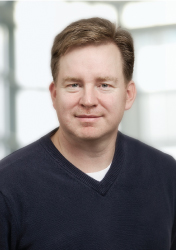
Dr. Alisdair Boraston
"From oceans to the gut: insights into seaweed biomass turnover from studies of the human gut microbiome"
Most of the photosynthetically fixed carbon present on Earth is in land plants. Photosynthetically fixed carbon in the oceans, however, is far more dynamically recycled than it is on land. Ocean plant biomass [i.e. microalgae and macroalgae (seaweed)] is estimated to be only ~1/200 that of terrestrial plant biomass yet the annual turnover rate of photosynthetically fixed carbon in the oceans is roughly equal to that on land indicating a normalized rate of recycling that is ~2-orders of magnitude greater than on land. The biochemical basis for the rapid turnover of carbon in seaweed biomass, which is primarily carbohydrate (polysaccharide) is not well understood. Such information is key to the development of complete biogeochemical models of the global carbon cycle and to unlocking abundant and farmable seaweed biomass sources as a feedstock for the generation of biofuels, the creation of high-value products, or use in other biotechnological applications.
One of the challenges in the biochemical mapping of microbial seaweed polysaccharide degrading pathways is that organisms that work in situ are typically psychrophilic, causing unique difficulties with the biochemical characterization of the enzymes making up the relevant pathways. We have turned to an unusual alternative set of microorganisms: those from the human gut microbiome. Polysaccharide degrading pathways are highly expanded in human gut bacteria and represented among these are pathways devoted to seaweed polysaccharide metabolism. The enzymes comprising the pathways from these mesophilic organisms provide a tractable alternative to the psychrophilic enzymes, allowing us to make significant inroads into the complete molecular delineation of these novel metabolic pathways. Furthermore, analysis of these pathways in gut microbes is providing unique insight into carbohydrate-driven adaptation of the gut microbiome and its individual members.
For more information: https://www.uvic.ca/research/learnabout/home/researchers/experts/expert/...
April 8, 2015
Dr. Nora Foroud
"Trichothecene Mycotoxins: Inhibitors of Eukaryotic Ribosomes and Virulence Factors in Crop Diseases"
Trichothecene mycotoxins are macrocylcic fungal metabolites known to inhibit protein synthesis in eukaryotic ribosomes. These toxins are virulence factors in Fusarium head blight disease of wheat and related cereals, and they accumulate in the kernels of Fusarium-infected cereal crops. Ingestion of trichothecene-contaminated grain can cause severe intestinal irritation in mammals, resulting in feed refusal in livestock, and can lead to a potentially fatal condition in humans and other mammals known as alimentary toxic aleukia. Trichothecenes are sesquiterpenoid compounds composed of a fused ring system (cyclohexene/tetrahydropyran/cylopentene), an epoxide function known to be essential for toxicity, and five variable R-groups. Over 200 trichothecenes have been identified and they are divided into four classes (types A-D), where the A and B types are produced by the Fusarium species involved in crop diseases, and the B type predominates. Type B trichothecenes include nivalenol, deoxynivalenol (DON) and its acetylated derivatives (3-acetyl DON and 15-acetyl DON). Different degrees of toxicity have been observed among trichothecenes, and these differences are specific to the class of organism in question. For instance, DON is known to be more phytotoxic than nivalenol, whereas the latter is more harmful in mammalian systems. While it is known that these toxins inhibit protein synthesis by disrupting peptidyl transferase activity, the exact mechanism of this inhibition is poorly understood. Furthermore, it is not known how differences in trichothecene structure can affect different levels of toxicity. Our long-term goals are to better understand the toxicity mechanisms of these compounds, and as an initial step towards this end, we have employed a series of solid-state and solution-state nuclear magnetic resonance (NMR) spectroscopy experiments to study the three-dimensional structures and hydrogen-bonding patterns of both Type A and B trichothecenes.
For more information: http://www.agr.gc.ca/eng/science-and-innovation/research-centres/alberta...
March 11, 2015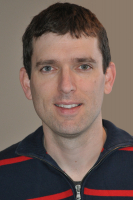
Dr. Brian Dempsey
"The S100 protein family: Calcium signals that control formation of protein complexes"
S100 proteins are a family of EF-hand calcium binding proteins. Most of the proteins in this family undergo a large conformational change upon calcium binding. This structural rearrangement exposes a hydrophobic protein-binding site. Calcium bound S100 proteins are then able to recruit, and bind, one or more proteins. Each S100 protein can have multiple protein binding partners and can therefore play multiple roles in the cell. S100 protein functions include regulation of protein phosphorylation, membrane repair, and cytoskeletal phosphorylation. This talk will focus on the ability of S100 proteins to form protein complexes for the regulation of cellular processes. Specifically, the regulation of dopamine signalling and p53 function by S100B as well as the ability of S100A10 to generate membrane repair complexes.
January 21, 2015
Dr. Lawrence Kawchuk
"Evolution and Lifestyle of RNA Viruses"
RNA viruses frequently capture the headlines and imagination because of their acute and chronic disease capabilities. Some infamous examples of RNA viruses include Ebola, Influenza, and the Polioviruses and they share many similar characteristics. Our research with the single-stranded positive-sense Polero RNA viruses has provided insight into the complexities associated with these relatively simple pathogens. It is remarkable that given the discoveries and advances made in sequencing, cloning and gene expression, small RNA and silencing, and diagnostics that these viruses continue to cause devastating epidemics. Fortunately, advances continue to be made in our understanding of the host-pathogen interactions and innate immunity that is helping to eradicate these diseases.
For more information: http://www.agr.gc.ca/eng/science-and-innovation/research-centres/alberta...
December 9, 2014
Dr. Staffan Svärd
"Host-parasite interactions during Giardia infections"
G. intestinalis (synonymous with Giardia lamblia and Giardia duodenalis) is one of the most common parasitic infections worldwide. It contributes to an estimated 280 million symptomatic human infections (giardiasis) per year and since 2004, has been included as part of the WHO Neglected Disease Initiative. Giardia is a potential zoonosisandinfection in young farm animalscan have an economical impact due to loss in productivity. However, there is relatively little insight into how Giardia causes disease; it is not invasive and secretes no known toxin.
We have studied host parasite interactions in an in vitro system that mimics the intestinal environment. RNA sequencing and proteomics was performed on human intestinal epithelial cells (Caco2) and parasites. We could detect strong responses in human intestinal epithelial cells after 1.5 hours, dropping at later time points of 3 and 4.5 hours. Gene network analysis revealed that Giardia-infection leads to the immediate activation of chemokines (CCL2, CCL20, CXCL1, CXCL2, CXCL3) and cytokines (IL8) on the RNA level but the level of secreted cytokines is low. Further, regulatory proteins of apoptosis and proliferation as well as cell adhesion molecules were induced after 1.5 hours of host-parasite interaction. Most of the early induced genes were down-regulated on transcript-level before 3 hours. Data analysis suggested that this was due to RNA decay of AU-rich element-containing transcripts. In the parasites the expression of high-cysteine rich membrane proteins and genes related to protection against oxidative stress was induced.
When parasites were exposed to conditions mimicking the lower intestinal tract the parasites differentiated to the infective cyst stage. This differentiation was studied using RNA Seq and epitope tagging. Only 13 of the around 6000 G. intestinalis protein encoding genes are consistently up regulated early during encystation. We also detected a switch of variant specific surface proteins (VSPs) in the late phase of encystation. This occurred at the same time as nuclear division and DNA replication, suggesting a potential link between the processes.
For more information: https://www.scilifelab.se/researchers/staffan-svard/

